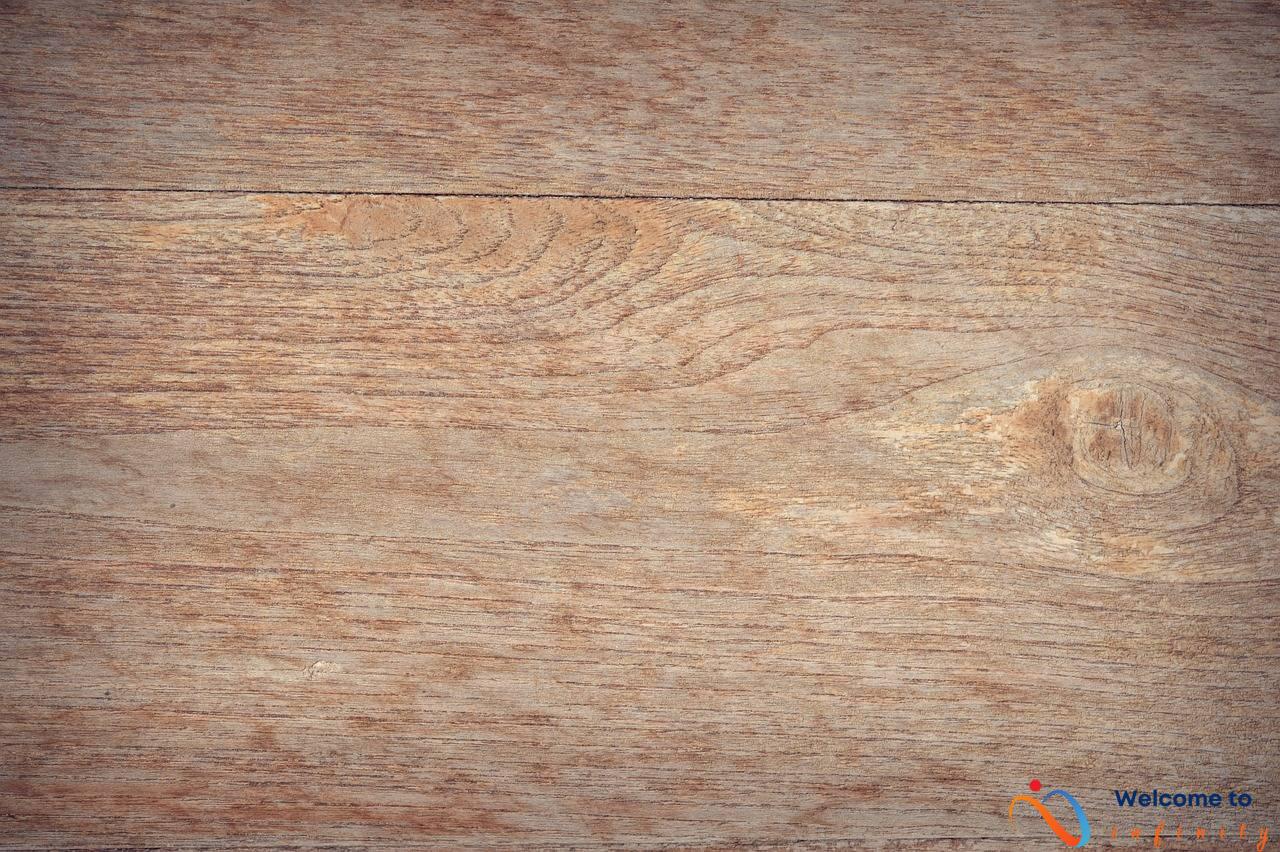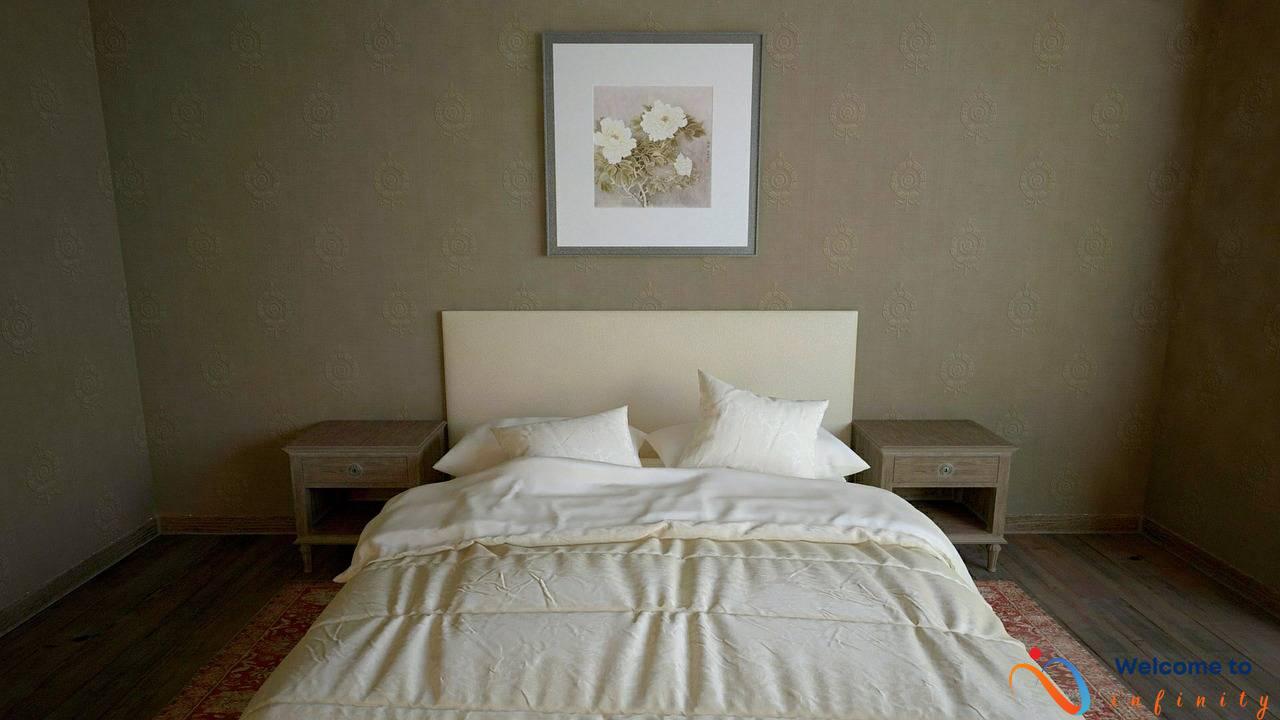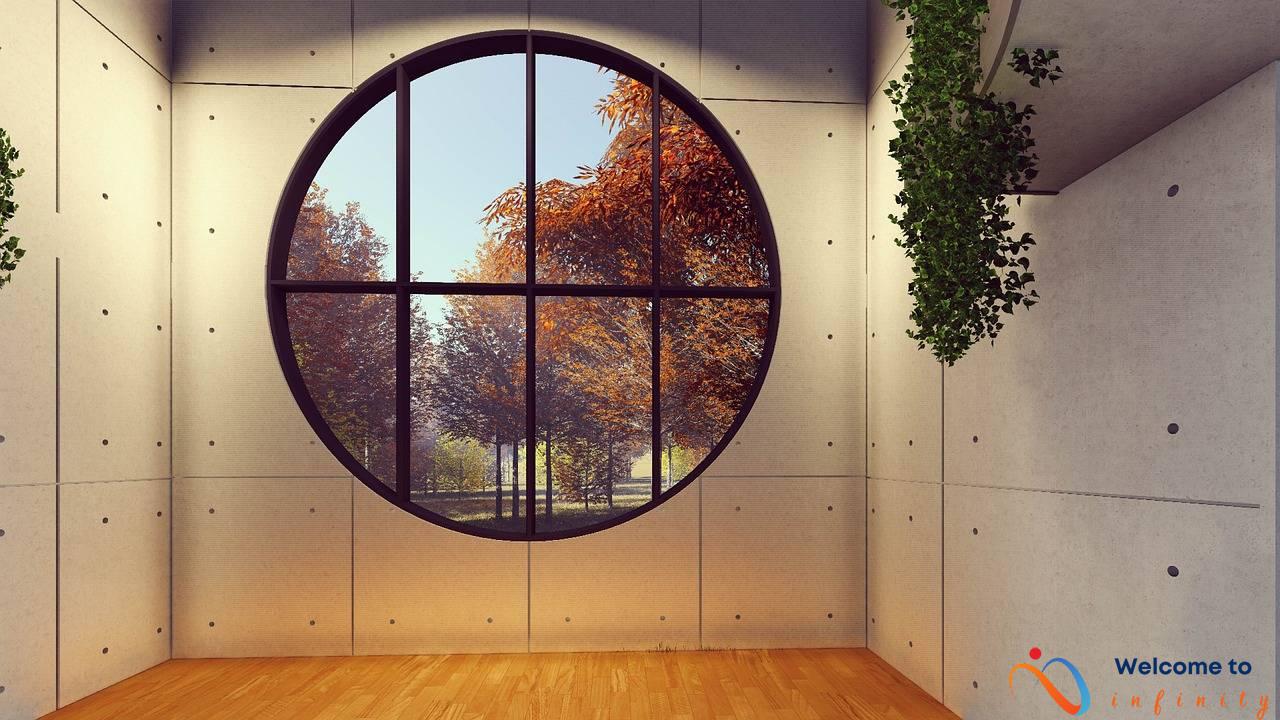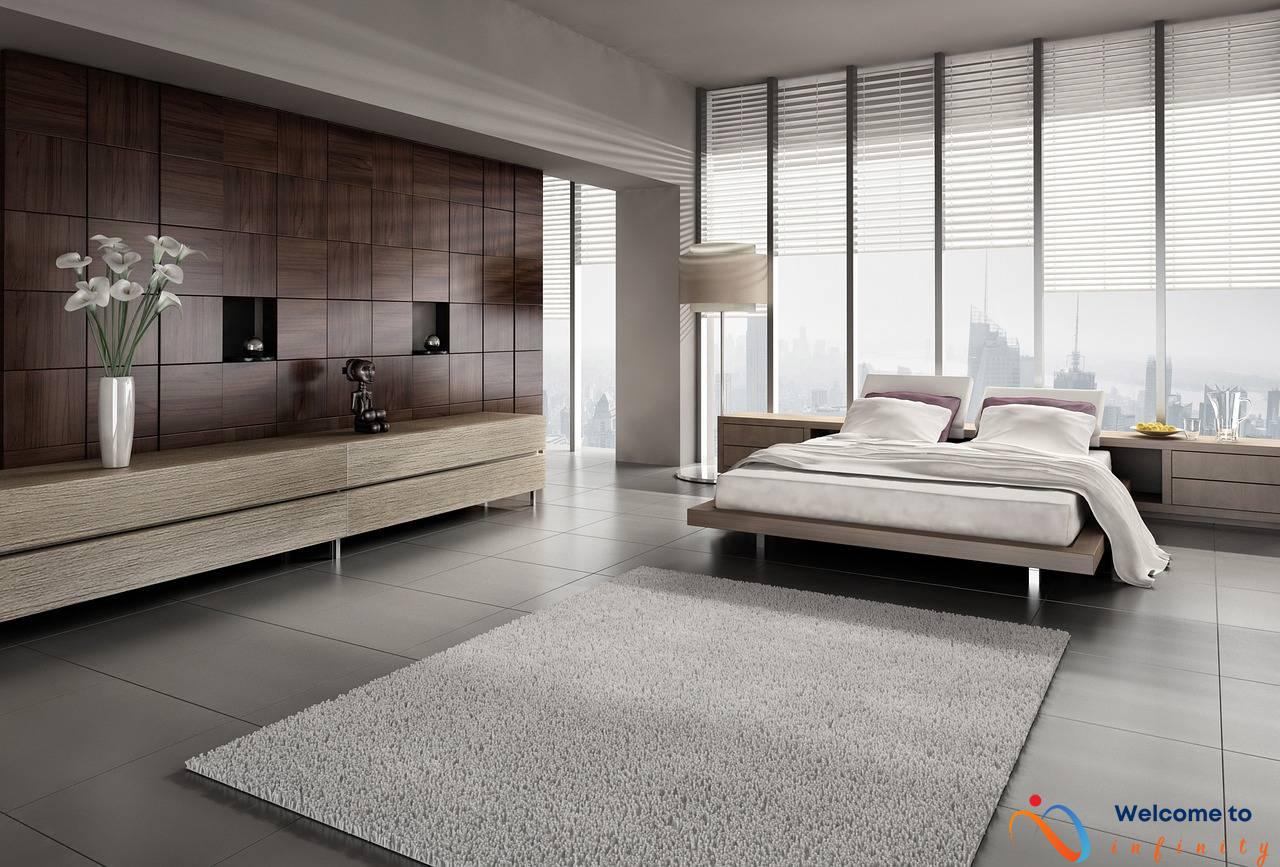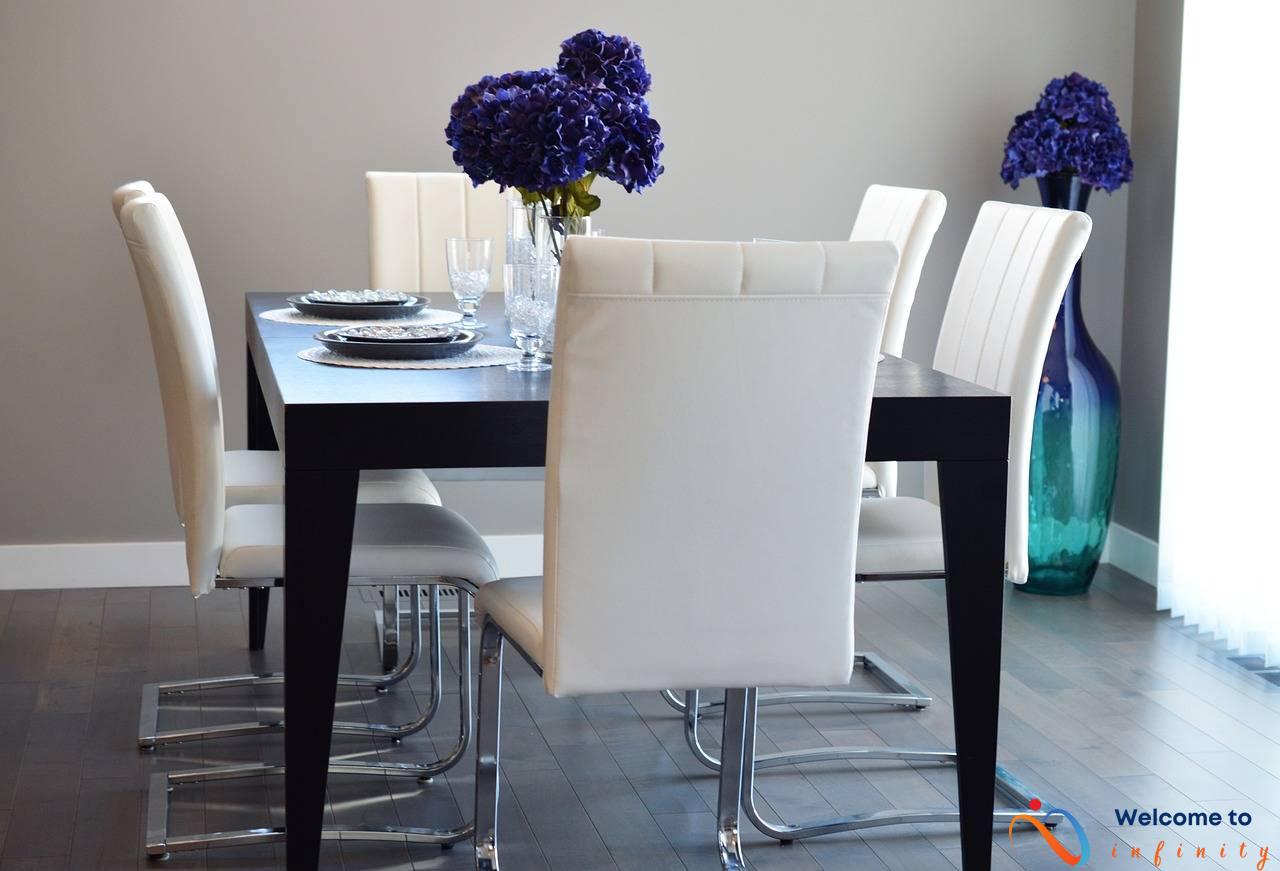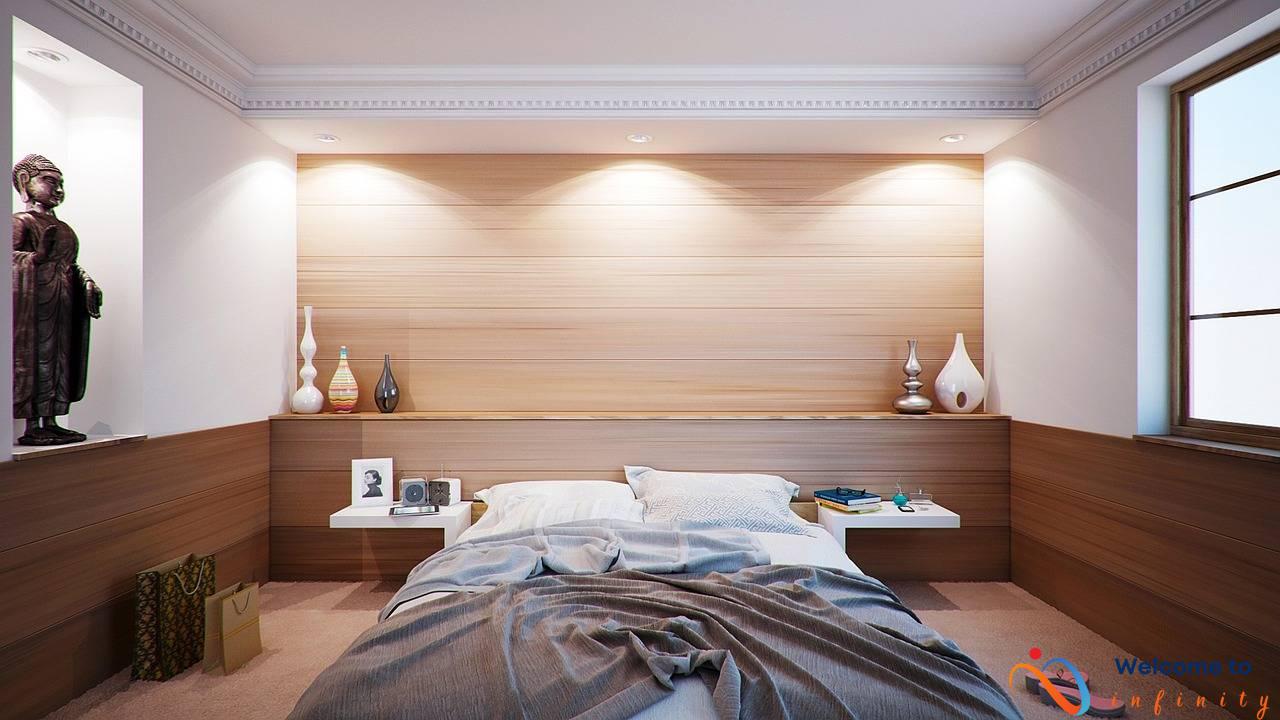The colors that you choose to paint your home can radically affect the mood of a room. Whether you're aiming to create a peaceful oasis or a lively space for socializing, choosing the right color scheme is crucial. Luckily, there are numerous color psychology principles that can guide you in selecting the perfect palette.
Warm colors such as red, orange, and yellow stimulate and energize a room while cool colors such as blue, green, and purple have a calming effect. Neutral shades like beige, gray, and off-white balance out the intensity of other colors and offer a clean canvas for accent pieces and furniture.
When choosing a color scheme, it's essential to consider complementary and analogous colors and monochromatic shades. Complementary colors, which are located opposite to each other on the color wheel, such as blue and orange, can add interest and visual appeal to a room. Meanwhile, analogous colors, which are located next to each other on the wheel, such as blue and green, can create a cohesive and harmonious look. Monochromatic colors, such as shades of blue, can offer a sophisticated and relaxing appearance.
Understanding Color Psychology
Colors have the power to influence our emotions and shape our mood. Warm colors like red, orange, and yellow, have a stimulating effect on our senses, while cool colors like blue, green, and purple have a calming effect. Neutral colors such as beige, gray, and off-white act as the perfect balance in color palettes.
Red is a passionate, bold color and is best suited for creating an accent wall or used in a dining room to stimulate appetite. On the other hand, orange is an energetic and cheerful color that works great in a playroom or an exercise room. Yellow is a joyful and warm color that can brighten up any space, making it perfect for a kitchen or a home office to inspire creativity.
Cool colors like blue, green, and purple create a calming and relaxing atmosphere and are perfect for spaces where you want to unwind, like bedrooms and bathrooms. Blue, in particular, is a serene and peaceful color that is perfect for a bedroom or a bathroom. Green is a refreshing and calming color that works well for a home office or any space where you want to focus. Purple is a regal and luxurious color that can be used in a bedroom or a meditation space to create a peaceful, calming ambiance.
Neutral colors such as beige, gray, and off-white provide a timeless and sophisticated look and serve as a backdrop for colorful accents and patterns. Beige is a warm and inviting color, perfect for a cozy living room or bedroom. Gray is a sleek and modern neutral color that is perfect for a chic home office or dining room. Off-white is a classic and elegant neutral color that works great in any room and pairs well with any accent color.
Overall, by understanding the psychology of colors, you can create the ideal atmosphere for any room in your home, whether it's a vibrant, social space or a cozy, calming retreat.
Color Schemes
Choosing a color scheme for your home can be a daunting task, but a little knowledge about color psychology and color schemes can help simplify the process. Using complementary colors, which are opposite each other on the color wheel, can create a bold and eye-catching look. For example, blue and orange complement each other and can create a dynamic color palette for a living room or kitchen.
Analogous colors, which are next to each other on the color wheel, can provide a cohesive look and create a sense of harmony. For example, using shades of blue and green in a bedroom can create a serene and relaxing environment for sleeping and unwinding.
If you want to create a calming effect in a room, consider using a monochromatic color scheme, which involves using different shades of the same color. For example, using various shades of blue in a bathroom can create a soothing and spa-like atmosphere.
When deciding on a color scheme, it's important to consider the mood you want to create in each room. Keep in mind that warm colors like red, orange, and yellow can create a cozy and inviting atmosphere, while cool colors like blue, green, and purple can create a calm and relaxing environment. Neutral colors like beige, gray, and off-white provide a classic and versatile backdrop for colorful accents and patterns.
Incorporating different color schemes in different rooms can create a diverse and interesting home. So, don't be afraid to experiment and have fun with color!
Warm Color Schemes
When it comes to creating a warm and inviting atmosphere, warm colors such as yellow, orange and red do the trick. These colors bring energy and vibrancy to any room, making them perfect for spaces where you want to encourage socialization such as living rooms and kitchens.
Yellow is a joyful and sunny color that brightens up any space. It is best used in a kitchen or home office for inspiration. For those looking for an energetic and cheerful color, orange is the perfect choice. Use it in a playroom or exercise room to create an exciting environment. As for red, it is passionate and bold, making it perfect for an accent wall or in a dining room to stimulate appetite.
When using warm color schemes, it is important to balance them out with neutral colors such as beige, gray or off-white. This provides a backdrop for colorful accents and patterns, preventing the space from becoming overwhelming.
- Yellow: joyful and sunny, ideal for a kitchen or home office
- Orange: energetic and cheerful, perfect for a playroom or exercise room
- Red: passionate and bold, adds excitement to a dining room or accent wall
Don't be afraid to mix warm colors together to create an inviting space. For example, yellow and orange work well together for a cheery and energetic atmosphere. Play around with different combinations to see what works best for your space!
Red
Red is a strong and stimulating color that creates a passionate and bold atmosphere. It is perfect for an accent wall, behind a headboard or living room setting. When using red in a dining room, it stimulates the appetite and encourages lively conversation.
To balance the intensity of red, pair it with neutral shades like beige, gray, or off-white and use it sparingly as an accent color. Red is also great for adding drama to a black and white color scheme. As a versatile color, it can be mixed with other shades such as pink or orange for a more eclectic look.
When choosing the right shade of red, keep in mind the different undertones. A deep reddish brown color like burgundy works well with other warm colors like gold, while a brighter shade like crimson pairs well with cooler shades like black, grays, and whites.
Red can also evoke different emotions depending on the context. In eastern cultures, red signifies good luck and happiness, often used in weddings and holidays. In western culture, red can represent danger or excitement. So, when using red in your home, consider the intended mood you want to create.
In summary, red is a passionate and bold color that can create a lively and stimulating atmosphere in your home. Use it as an accent color, sparingly, and pair it with neutral shades like beige, gray, or off-white to balance the intensity. Choose the right shade for your desired outcome and consider the cultural significance when using red.
Orange
Orange is a vibrant and lively color that adds energy and cheerfulness to any space. It is a warm color that stimulates the senses, making it perfect for use in playrooms or exercise rooms. The color orange is known to increase enthusiasm, making it an excellent choice for a space where you want to feel motivated and energetic.
When incorporating orange into your decor, you can go bold with an entire wall or use it sparingly in accents such as throw pillows or rugs. For a playful look, pair orange with other bright colors such as pink or yellow. If you prefer a more subdued feel, pair it with neutrals such as gray or beige.
- Orange pairs well with blue to create a complementary color scheme.
- Add a pop of orange to a home gym to increase motivation and energy levels.
- For a tropical feel, pair orange with green and yellow accents.
Whether you use it in playful accents or as a main color, orange adds a touch of vibrancy and cheerfulness to any room. It's a color that can stimulate and energize, making it an excellent choice for playrooms or exercise rooms. Incorporate this lively color into your decor and enjoy the positive energy it brings to your home.
Yellow
Yellow is a bright and cheerful color that brings instant warmth and happiness to any space. It is a color of positivity, optimism, and energy. Yellow works well in spaces where creativity and inspiration are required, such as in a kitchen or home office. This color can be used in a variety of ways, from a bold accent wall to small pops of color in décor.
In a kitchen, yellow can help create a warm and inviting space. It is a great color for cabinets, walls, and backsplashes. Yellow cabinetry paired with white countertops and walls creates a fresh and modern look, while yellow walls and backsplashes give a classic and stylish feel. For a bolder touch, choose a bold yellow range or refrigerator.
In a home office, yellow can stimulate creativity and productivity. It is a great color to incorporate into furniture, such as a yellow desk, chair, or bookshelf. Yellow accents in the form of curtains, pillows, or lamps can also add a touch of cheerfulness to the space. A yellow feature wall can make a bigger statement, but make sure to balance it out with neutral furniture.
When using yellow in a space, it's important to balance it out with other colors. Pairing it with white, gray, or black can tone down the brightness of yellow and create a more polished look. For a more eclectic look, pair yellow with pink, blue, or green. Also, keep in mind that different shades of yellow can create a different impression. A lighter yellow can make a space feel airy and open while a more mustard or gold tone can add richness and depth.
Incorporating yellow into your home décor can bring a sense of joy and warmth to any room. Use it creatively and remember to balance it out with other colors for a harmonious look.
Cool Color Schemes
Cool colors such as blue, green, and purple are perfect for creating a calming and relaxing atmosphere in your home. Whether you're looking to create a tranquil retreat in your bedroom or a spa-like oasis in your bathroom, cool colors are the way to go.
Blue is a serene and peaceful color that is perfect for creating a relaxing atmosphere in your home. It's a great choice for bedrooms and bathrooms, where you want to unwind and destress. Shades of blue can range from soft and subtle to deep and dramatic, so you can easily find a shade that suits your personal style and taste.
Green is another soothing color that can help promote relaxation and calm. It's ideal for use in a home office or any space where you want to focus and feel productive, as it has been shown to improve concentration and reduce anxiety. Pale greens like sage and mint are especially popular for creating a tranquil and refreshing atmosphere in your home.
Purple is a regal and luxurious color that is perfect for creating a sense of indulgence and serenity in your home. It's an ideal shade for a bedroom or meditation space, as it is calming and helps promote relaxation. From soft lilacs to deep eggplants, there are many shades of purple to choose from that can help create the perfect mood in your home.
- Blue: Create a serene and peaceful atmosphere in your home with shades of blue.
- Green: Promote relaxation and focus with calming shades of green.
- Purple: Indulge in luxury and serenity with shades of purple.
When using cool colors in your home, consider pairing them with complementary colors to create a cohesive look. For example, blues look great with whites and grays, while greens pair nicely with wood tones. Don't be afraid to experiment and mix and match different shades and colors until you find the perfect combination that creates the mood you're looking for.
Blue
Blue is a popular choice for bedrooms and bathrooms as it creates a serene and peaceful environment. It is a calming color that helps to reduce stress and anxiety, making it perfect for a place of relaxation. Light shades of blue create a sense of tranquility, while darker shades evoke a sense of sophistication and elegance.
When using blue in a bedroom, pair it with white or pale grey for a fresh and airy look. Add pops of color with pillows, curtains, or art. In a bathroom, blue pairs well with crisp white towels and natural wood accents.
If you want to create a beachy vibe, combine shades of blue with sandy beige and seafoam green. You can also incorporate seashell and coral motifs in your decor. For a bold twist, pair blue with bright yellow or fuchsia for a fun and energetic look.
- Tip: If painting a whole room blue feels overwhelming, start with an accent wall or incorporate blue into your decor through accessories such as throw pillows, rugs, or curtains.
Overall, blue is a versatile color that can suit any room in your home. Whether you want to create a tranquil bedroom or a spa-like bathroom, blue is the perfect choice for a serene and peaceful space.
Green
Green is a versatile color that can create a relaxing and peaceful atmosphere. It is associated with nature and growth, making it a great choice for any room where you need to concentrate and focus.
In a home office, green can help you maintain concentration and increase productivity. It is also a great choice for a reading nook, as it provides a calming backdrop for extended periods of time spent with a book or computer screen.
If you're not sure which shade of green to use, consider pairing it with other colors to create a cohesive look. Lighter shades of green, such as mint or sage, create a fresh and airy feel while darker shades, such as forest green or olive, create a more sophisticated and cozy vibe.
- Pair green with white or beige for a classic and timeless look.
- Pair green with navy blue or gray for a modern and sophisticated feel.
- For a bold statement, pair green with pink or coral for a fun and playful twist.
No matter how you choose to incorporate green into your home, it is sure to add a refreshing and calming element to any space.
Purple
Purple is an alluring color and has long been associated with royalty, making it perfect for a luxurious bedroom or meditation space. Whether you choose a soft lilac or a deep plum, purple can create a sense of tranquility and spirituality.
To create a serene and calming atmosphere, pair shades of purple with neutral colors like white or beige. Alternatively, you can pair purple with metallic accents such as gold or silver to create a more opulent and regal space.
If you want to incorporate purple into your decor without committing to it entirely, try using it as an accent color. For example, you can add throw pillows, curtains, or an area rug in shades of purple to bring a touch of sophistication to your space.
Overall, purple is a versatile color that can be used to create a wide variety of moods and atmospheres. From a peaceful meditation room to a lavish bedroom, purple can add a touch of luxury and refinement to any space.
Neutral Color Schemes
Neutral color schemes are a popular choice for many homeowners due to their timeless and sophisticated look. These colors provide a neutral backdrop that can be easily paired with colorful accents and patterns. Beige is a warm and inviting neutral color that can be used to create a cozy living room or bedroom. Gray is a sleek and modern neutral that works well in a chic home office or dining room. Off-white is a classic and elegant neutral that looks great in any room and pairs well with any accent color.
When using neutral color schemes, it's important to add interest with texture and pattern. This can be achieved with the use of throw pillows, area rugs, and curtains in various colors and patterns. You can also mix and match different shades of neutral colors for a monochromatic look that creates a calming effect.
In addition, you can add a pop of color to a neutral space with a statement piece such as a colorful sofa or artwork. This will add visual interest and warmth to your room. Another option is to use metallic accents such as gold or silver to give your neutral space a touch of glam.
When choosing a neutral color scheme, also consider the lighting in your space. Beige and off-white tend to work best in rooms with plenty of natural light, while gray can add depth and richness to a room with less natural light.
- Beige: warm and inviting, great for a cozy living room or bedroom
- Gray: sleek and modern, perfect for a chic home office or dining room
- Off-white: classic and elegant, looks great in any room and pairs well with any accent color
Overall, neutral color schemes provide a versatile and sophisticated palette that can work with any style or theme. By adding pops of color and texture, you can create a welcoming and inviting space that reflects your personal style.
Beige
Beige is a versatile neutral color that can create a warm and inviting atmosphere in any room. It pairs well with other neutrals like gray and white, as well as bold accent colors like navy blue and emerald green. Here are some tips for using beige in your home:
- Pair beige walls with natural wood furniture and warm-toned textiles for a cozy living room.
- Choose a plush beige carpet or area rug to give your bedroom a soft and luxurious feel.
- For a minimalist look, use beige as the main color and accent with black or white accessories.
Beige is also a popular choice for exterior home colors. It blends well with natural surroundings and can give your home a timeless and classic look. Pair with dark wooden accents like shutters or a front door to add visual interest.
Gray
When it comes to incorporating neutrals into your home decor, gray is a versatile option that works well in any room. Its understated elegance adds a touch of sophistication to your space, making it ideal for a chic home office or dining room.
Gray is available in a range of shades, from light dove gray to dark charcoal, which makes it easy to find the perfect hue to complement your decor. Lighter shades of gray can make small spaces appear bigger and can serve as a perfect background for colorful accents, while dark shades can create a cozy and intimate atmosphere.
Pair gray walls with white or cream-colored furniture for a classic and timeless look, or add a pop of color with brightly colored accent pieces like pillows or artwork. You can also experiment with different textures and patterns to add depth to your decor. A shag rug or plush velvet curtains can add warmth and comfort to a gray room.
If you're looking for a modern and sophisticated color scheme for your home, gray should definitely be on your list of options. Its sleek and refined look can enhance any decor and is sure to make a statement in your home.
Off-white
Off-white is a versatile and timeless neutral color that can give your room a classic and elegant vibe. This pale hue is perfect for adding a touch of sophistication to any space without being too distracting. It has a subtle charm that can make your furniture, decorations, and other colors stand out. Off-white is the go-to color when you want to create a neutral backdrop for patterns and bright accent colors.
Off-white walls and ceilings create a perfect blank canvas for contrasting decorative elements such as artwork, accent rugs, and colorful throw pillows and curtains. This shade can also create a welcoming atmosphere for any room in the house, including the living room, bedroom, and den. It is a subtle and calming color that can soothe the mind and bring a sense of tranquility to the space.
Pairing off-white with other colors is relatively straightforward. It coordinates seamlessly with most hues, including earth tones as well as bright and bold colors. You can create a monochromatic look by pairing off-white with other pale shades or use it to tone down brighter and bolder colors. Additionally, if you are looking to create a more formal and sophisticated vibe, using darker neutrals such as grey or black as an accent color can create a modern twist to off-white.
In conclusion, off-white is a versatile neutral color that adds a touch of elegance and sophistication to any room. It pairs well with most colors, making it an ideal backdrop for a variety of interior designs. Whether you want to create a calm atmosphere or add some subtle charm to space, off-white can help you achieve the desired effect. Remember to experiment with different color schemes and accent pieces to bring your space to life and make it feel like home.




